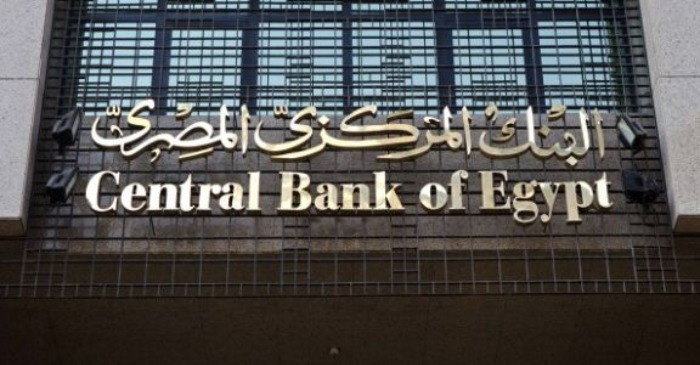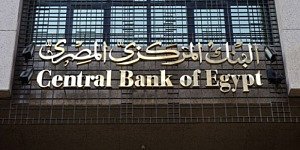The Monetary Policy Committee (MPC) of the Central Bank of Egypt (CBE) decided to keep key interest rates unchanged for the sixth consecutive time during its final meeting for 2024 held on Thursday.
Accordingly, the overnight deposit, overnight lending rate, and primary operations rates are now steady at 28.25 percent, 27.75 percent, and 27.75 percent, respectively.
The MPC also kept the discount rate unchanged at 27.75 percent.
Extending time span of inflation targets
Moreover, CBE decided to extend the inflation target horizons to the fourth quarter (Q4) of 2026 and 2028 at seven percent (± two percent) and five percent (± two percent) on average, respectively, instead of the Q4 of 2024 and the corresponding quarter of 2026.
CBE attributed the action to its gradual advance towards implementing a fully fledged inflation targeting regime.
“The deferment will allow for more room to weather price shocks without requiring further stringent monetary tightening, thereby avoiding substantial slowdown in economic activity,” the CBE justified the decision.
Since March 2022, CBE has been in a cycle of monetary policy tightening in response to the implications of the Russian-Ukrainian war, which resulted in an inflationary wave globally and locally.
Since then, the CBE hiked the key interest rates by 19 percent (1,900 bps). Yet, the inflation rates are still well beyond the targets the CBE set beforehand.
On a global level, CBE cited the incremental rate cuts the central banks in advanced and emerging market economies continued to introduce as inflation moderated while maintaining a restrictive stance to ensure convergence to target levels.
“Economic growth is broadly stable, with the current pace expected to continue over the medium term, yet still below pre-pandemic levels. However, the outlook is subject to downside risks, including the dampening effect of monetary tightening on economic activity, heightened geopolitical tensions, and the resurgence of protectionism”, said the CBE.
Additionally, the CBE highlighted that global commodity prices have recently exhibited minimal volatility, with projections of a likely decline, mainly in energy prices.
However, the CBE warned that upside risks to inflation remain, including disruptions to global trade and the adverse effects of extreme weather events on agricultural production.
Domestically, the CBE explained that leading indices for Q3 and Q4 of 2024 signal continued recovery in economic activity, with estimates indicating that real GDP growth has sped up compared to Q2 of 2024.
Yet, Egypt's real GDP remains below its potential, supporting the expected decline in inflation throughout 2025, and is projected to realize its full potential by the end of FY2025/2026, which starts on 1 July, according to the CBE.
“Concerning the wage channel, inflationary pressures continue to be subdued, as real wage growth remains contained. After three-month stability, annual headline inflation eased in November 2024 to 25.5 percent, mainly driven by a decline in food prices, with volatile and core food prices recording their lowest annual inflation in almost two years at 24.6 percent,” said CBE.
In contrast, administered prices of non-food items, including fuel products, inland transportation, and tobacco products, rose in line with the revenue mobilization strategy to curb the fiscal deficit.
That said, annual core inflation declined to 23.7 percent in November 2024 against 24.4 percent in October 2024.
“These outturns, along with the improvement in inflation expectations that reflected in the gradual normalization of monthly inflation dynamics, suggest that inflation will continue its downward course,” the CBE explained.
It added that, after a surge in global inflation for more than two years, inflation in advanced and emerging economies started to decelerate yet remains above target levels. Egypt has not been an exception; with headline inflation declining recently, it is anticipated to average around 26 percent in Q4 of 2024, missing the CBE target range of seven percent (±two percent).
Factors leading to inflation
The bank attributed that to a combination of domestic and global economic factors throughout 2022-2024, chiefly the build-up of external imbalances, fueled by a surge in global food prices throughout 2021, imported inflation, and sizeable portfolio outflows following the outbreak of the Russian-Ukrainian war. It also justified that by citing the domestic supply shocks arising from market distortions and unanchored inflation expectations.
CBE also noted that one reason is the fiscal consolidation measures Egypt has taken to tighten its fiscal stance and place debt on a downward trajectory.
“These developments, along with exchange rate depreciation, drove inflation above the target range, with annual headline inflation peaking at 38 percent in September 2023, before declining to 25.5 percent in November 2024,” the bank elaborated.
In this respect, the CBE highlighted the measures it took in March 2024 to restore macroeconomic stability, which succeeded in containing inflationary pressures and bringing down overall inflation.
These measures included hiking the interest rates by six percent (600 bps) and applying the fourth wave of fair pricing of local currencies against other currencies.
Nevertheless, the CBE underpinned a group of risks to the outlook, including a possible escalation of geopolitical tensions, a resurgence of protectionism, and a higher-than-anticipated passthrough of fiscal measures.
Going forward, the CBE projected inflation to cool substantially in 2025 as the cumulative impact of monetary policy tightening and the favourable base effect materializes. A notable decline is expected in Q1 of 2025 and convergence to single digits by H2 of 2026.
It also affirmed that the duration and extent of policy restrictiveness will be made on a meeting-by-meeting basis.
“Such decisions will continue to be outlook dependent, responsive to data developments, and sensitive to the prevailing balance of risks,” it explained.







































